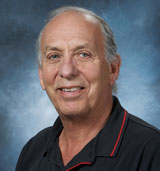Peter Oscar Harken
Surabaya, Java, Indonesia U.S. Citizen: December 18, 1968, Milwaukee, Wisconsin
August 18, 1937

Peter Oscar Harken
Surabaya, Java, Indonesia U.S. Citizen: December 18, 1968, Milwaukee, Wisconsin
August 18, 1937
Dropping the Balls
While he was struggling with the math involved with engineering at University of Wisconsin at Madison, Peter Harken had a part-time job at Gilson Medical Electronics. The rule at Gilson was designers had to build their own prototypes; so as a draftsman, Harken had gotten friendly with the machine shop. One night, some plastic ball bearings he had found to solve a problem in a refrigerated environment rolled off the bench onto the floor. “I was amazed at how high they bounced,” he recalls. “The less mass, the further things accelerate – that’s what pulleys do on a boat, stop and start all the time.” The standard blocks at the time were brass, sometimes with brass ball bearings that were heavy and sluggish. Harken had upgraded to stainless bearings for the blocks he had been making for his E-Scow and ice boat. They were were soon replaced by blocks with lighter, more lively plastic bearings, and that day yachting hardware took a giant leap forward. Harken had learned engineering wasn’t all math: “Sometimes it’s just bloody common sense.” But he switched to economics anyway to play it safe.
Peter and his brother Olaf were born in Indonesia, where their father was a Caterpillar Tractor representative. Peter remembers crouching under the dining room table during bombings when the Japanese attacked. The children and their mother escaped to Eastern Borneo, spent a year in New Zealand and a year in Australia before they were reunited in 1949 with their father, who had survived a Japanese prison camp against all odds. Off the family went to the Philippines (for Caterpillar) where the boys attended grammar through high school. Both won swimming scholarships to colleges in the U.S.
“Olaf would often come to Wisconsin,” Peter says, “because the partying was better, and we both got to like the place and the people.” Sailors, both of them got involved in Wisconsin’s famed scow and ice boat fraternity. Peter bought a raw wood E-Scow hull and finished it himself, new blocks and all. “The other guys noticed how easily my boom went out in light air,” Peter says, “so I was making blocks for them early on.”
Over the past 40 years, Peter Harken has traveled extensively, setting up global Harken dealerships and solving problems. Most recently he returned from Palma, Majorca, where he was evaluating custom Harken installations on J-Class yachts.
– Roger Vaughan

